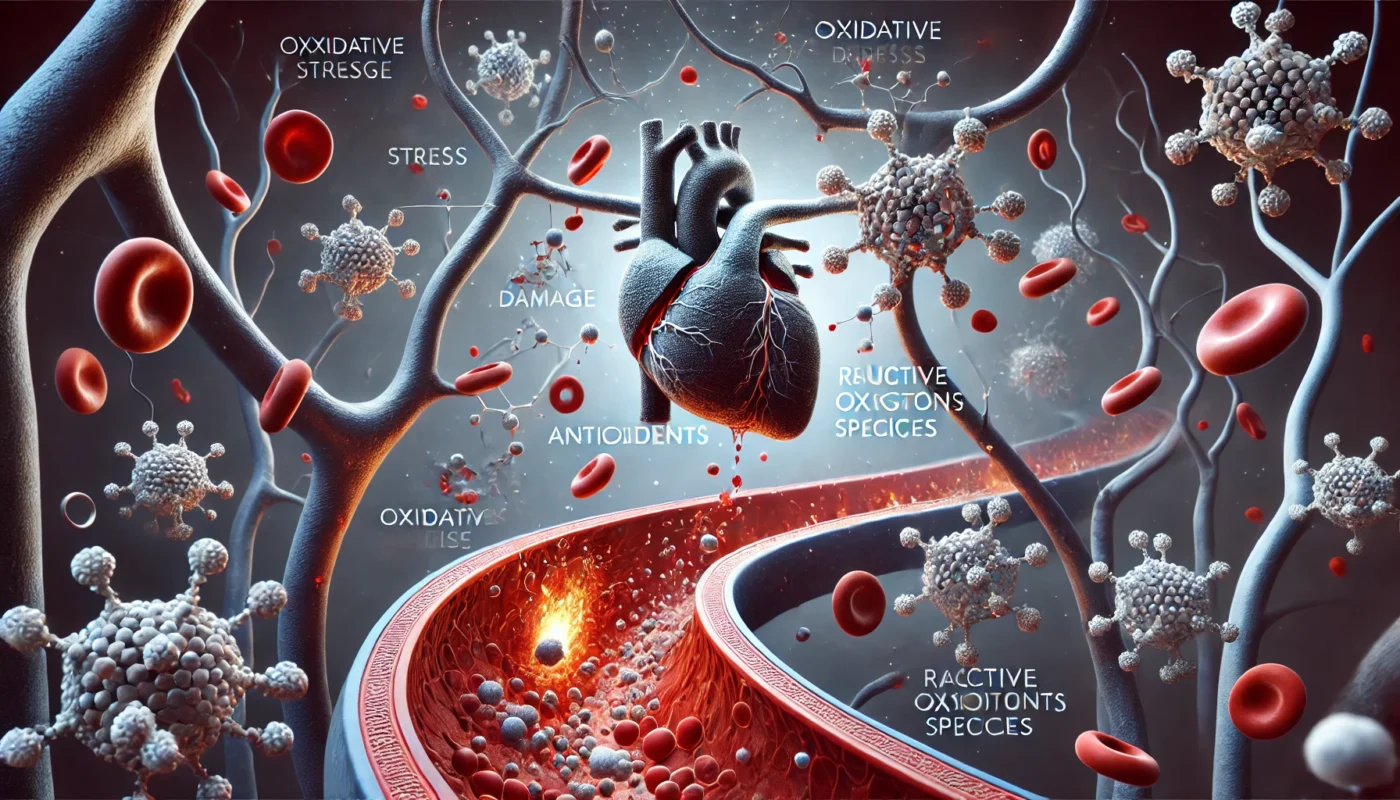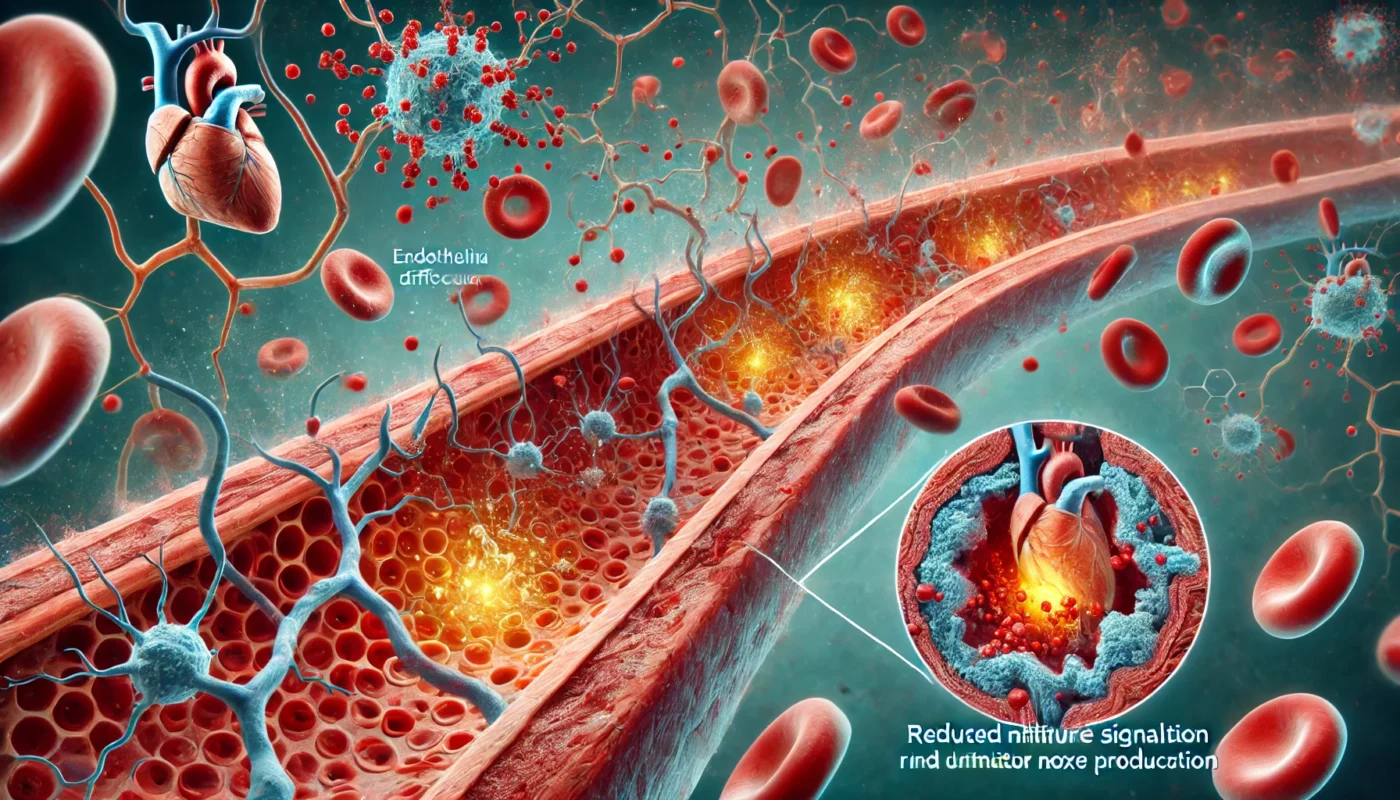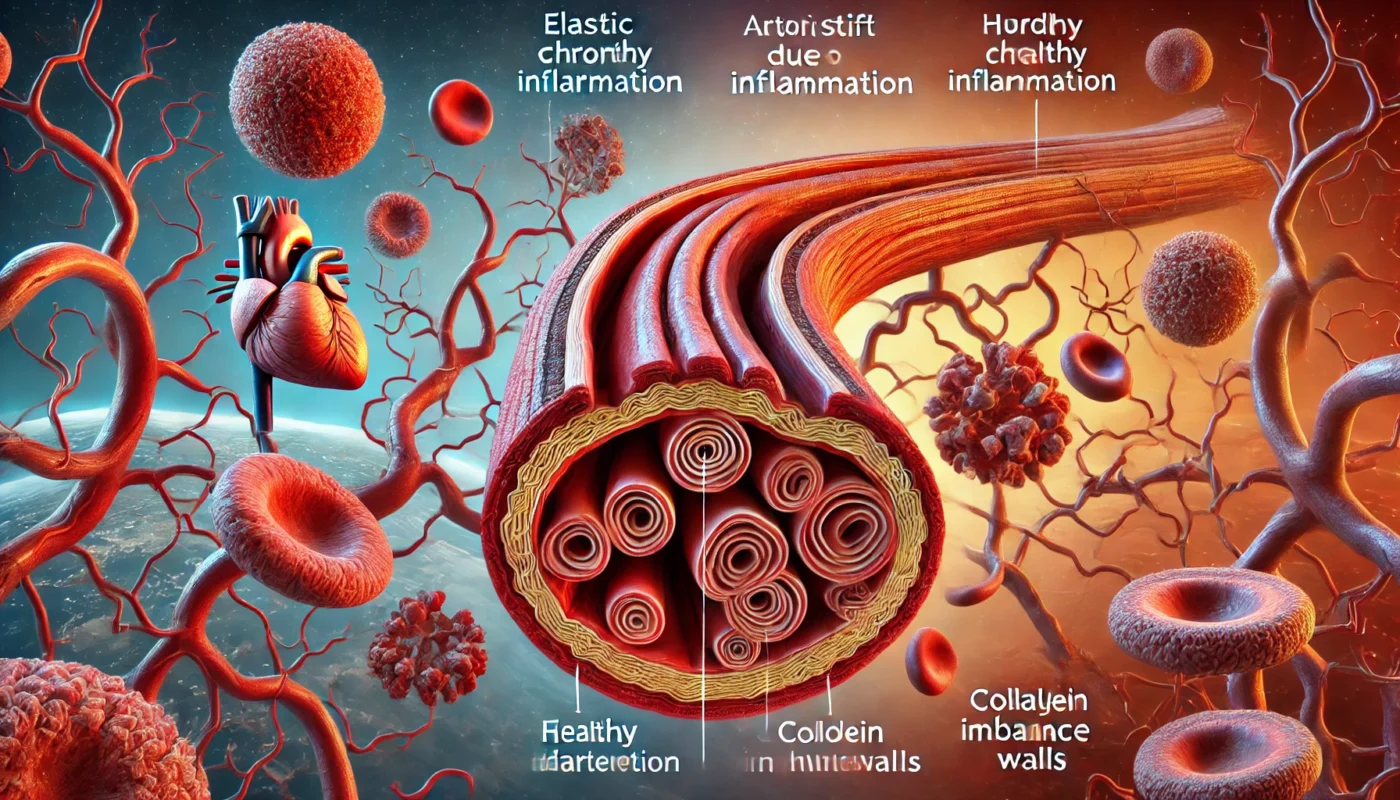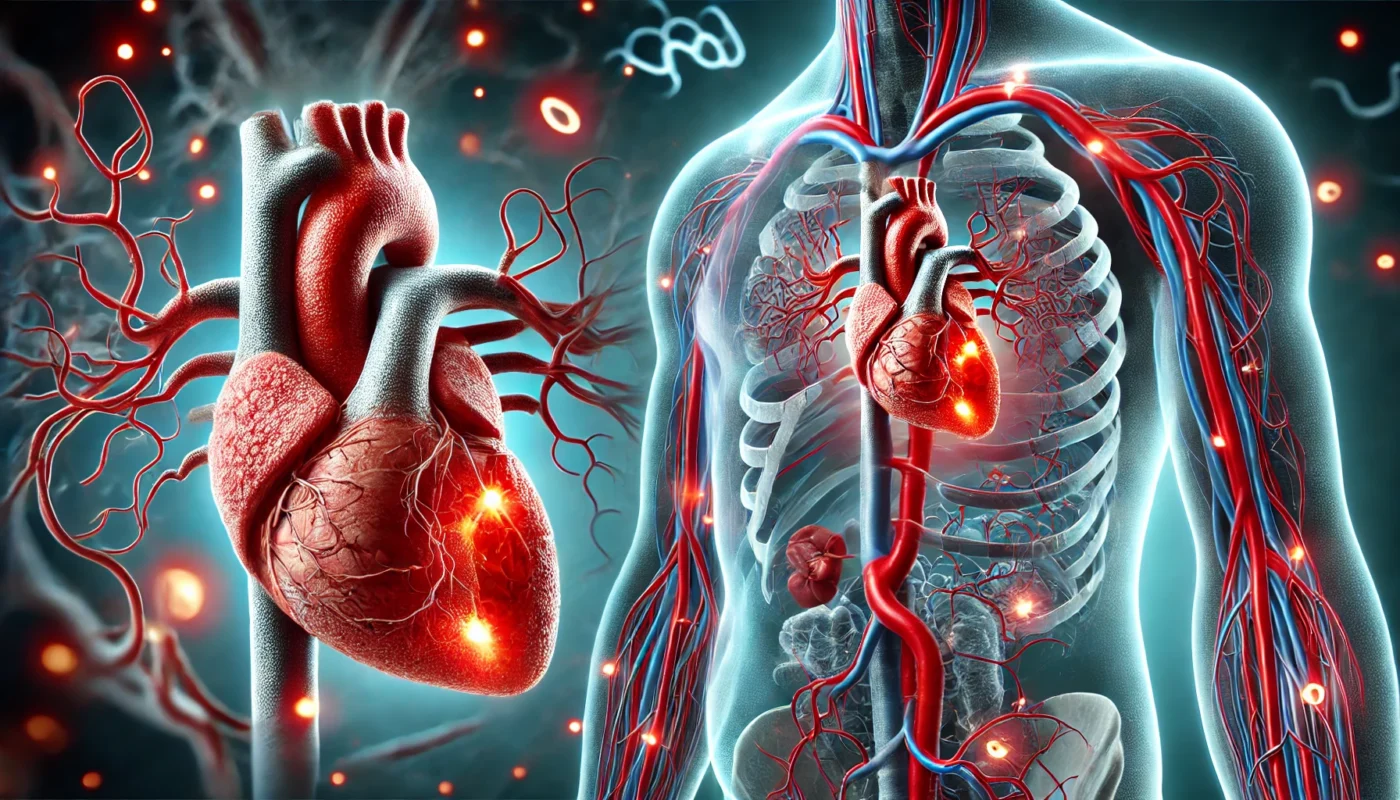Inflammation is a natural and essential process that helps the body heal and fight off infections. When an injury or pathogen triggers this response, the immune system releases various chemicals to protect the affected area. These chemicals increase blood flow, causing redness, warmth, and swelling. While acute inflammation is beneficial, chronic inflammation can be detrimental, leading to various health issues, including hypertension.
You may also like: 20 Powerful Anti-Inflammatory Foods
Acute vs. Chronic Inflammation
Acute inflammation is the body’s immediate response to harm, aiming to eliminate the initial cause of cell injury, clear out damaged cells, and establish repair. It is a short-term process, usually resolving within a few days. In contrast, chronic inflammation is a prolonged inflammatory response that can last for months or even years. Unlike acute inflammation, it can cause a continuous cycle of tissue destruction and repair, potentially leading to diseases such as hypertension.
Chemical Mediators of Inflammation
The inflammatory process is driven by chemical mediators like cytokines and prostaglandins. Cytokines are proteins that regulate immune responses, while prostaglandins are lipid compounds that mediate inflammation and pain. These mediators are essential for signaling between cells and coordinating the body’s response to injury. However, their overproduction in chronic inflammation can lead to tissue damage and contribute to the development of hypertension.
Systemic Effects of Inflammation
Chronic inflammation doesn’t just affect local tissues; it can have systemic effects throughout the body. It can lead to increased production of acute-phase proteins, a rise in white blood cells, and changes in blood chemistry. These systemic changes can impact various organs and systems, including the cardiovascular system, potentially leading to increased blood pressure and heart-related issues.
Understanding Hypertension
Hypertension, or high blood pressure, is a condition where the force of the blood against artery walls is consistently too high. Over time, this increased pressure can lead to serious health problems such as heart disease, stroke, and kidney damage. Blood pressure is determined by the amount of blood the heart pumps and the resistance of the arteries to blood flow. When arteries narrow, blood pressure increases.
The Mechanics of Blood Pressure
Blood pressure is measured in millimeters of mercury (mmHg) and recorded with two numbers: systolic and diastolic. The systolic pressure is the higher number, representing the pressure in your arteries when the heart beats. The diastolic pressure is the lower number, indicating the pressure in the arteries when the heart rests between beats. Consistent elevation in these numbers indicates hypertension.
Types of Hypertension
There are two primary types of hypertension: primary (essential) and secondary. Primary hypertension develops gradually over many years and has no identifiable cause. Secondary hypertension, on the other hand, is caused by an underlying condition such as kidney disease, adrenal gland tumors, or certain medications. Understanding the type of hypertension one has is crucial for effective management and treatment.
Complications of Untreated Hypertension
If left untreated, hypertension can lead to severe complications. It can cause damage to the arteries, heart, brain, kidneys, and eyes. The increased pressure can lead to hardened arteries, reducing blood and oxygen flow to the heart, leading to heart disease. It can also lead to stroke, kidney failure, and vision loss, underscoring the importance of early detection and management.
How Inflammation Causes High Blood Pressure
The link between inflammation and hypertension is complex and multifaceted. Here are some ways inflammation can lead to high blood pressure:
Endothelial Dysfunction
The endothelium is a thin membrane lining the inside of blood vessels, playing a crucial role in vascular health. Inflammation can damage the endothelium, impairing its ability to produce nitric oxide, a molecule that helps relax blood vessels. This dysfunction can lead to vasoconstriction, increasing blood pressure.
Impaired Nitric Oxide Production
Nitric oxide is vital for maintaining vascular health as it facilitates vasodilation, the widening of blood vessels. When inflammation hampers the endothelium’s ability to produce nitric oxide, blood vessels remain constricted, elevating blood pressure. This impairment disrupts normal blood flow and increases the workload on the heart, contributing to hypertension.
Vascular Inflammation
Inflammation of the vascular system can result in the thickening and hardening of artery walls. This process, known as atherosclerosis, narrows the arteries and restricts blood flow. The inflammation exacerbates the damage to the endothelial cells, perpetuating a cycle of vascular injury and repair that elevates blood pressure levels.

Role of Inflammatory Cytokines
Inflammatory cytokines such as interleukin-6 (IL-6) and tumor necrosis factor-alpha (TNF-alpha) can further complicate endothelial function. These cytokines promote vascular inflammation and oxidative stress, impairing the normal functioning of blood vessels. The resulting inflammation and oxidative stress create a conducive environment for hypertension to develop.
Increased Arterial Stiffness
Chronic inflammation can cause the arteries to become stiff and less elastic. As a result, the heart must work harder to pump blood through these rigid vessels, raising blood pressure.
Elastin and Collagen Imbalance
Elastin and collagen are proteins that provide elasticity and strength to blood vessel walls. Inflammation disrupts the balance between these proteins, leading to increased collagen deposition and decreased elastin content. This imbalance results in stiffer arteries, which resist the normal pulsatile flow of blood, contributing to elevated blood pressure.
Impact on Pulse Wave Velocity
Pulse wave velocity (PWV) is a measure of arterial stiffness. Inflammation can increase PWV, indicating stiffer arteries and higher blood pressure. This increased stiffness forces the heart to exert more pressure to maintain adequate blood circulation, further elevating blood pressure levels.
Influence of Age and Lifestyle
Age and lifestyle factors such as diet and physical activity can influence arterial stiffness. Chronic inflammation exacerbates these effects, accelerating the stiffening process. Healthy lifestyle choices can mitigate some of these changes, highlighting the importance of addressing inflammation through diet and exercise.
Oxidative Stress
Inflammation can increase oxidative stress, an imbalance between free radicals and antioxidants in the body. This stress can damage blood vessels, promoting atherosclerosis—a condition characterized by the buildup of fatty deposits in the arteries—which can lead to hypertension.
Free Radicals and Antioxidants
Free radicals are unstable molecules that can damage cells, proteins, and DNA. Antioxidants neutralize free radicals, preventing cellular damage. Inflammation increases the production of free radicals, overwhelming the body’s antioxidant defenses and leading to oxidative stress, which can damage the cardiovascular system and elevate blood pressure.
Role in Atherosclerosis
Oxidative stress is a key player in the development of atherosclerosis. It contributes to the oxidation of low-density lipoprotein (LDL) cholesterol, leading to plaque formation in the arteries. These plaques narrow and harden the arteries, restricting blood flow and increasing blood pressure, further linking inflammation to hypertension.
Mitigating Oxidative Stress
Dietary choices rich in antioxidants can help combat oxidative stress. Foods high in vitamins C and E, as well as polyphenols, can enhance antioxidant defenses, reducing oxidative damage to blood vessels. Incorporating such foods into the diet can help manage oxidative stress and lower the risk of hypertension.
Immune System Activation
Chronic inflammation can activate the immune system, causing it to attack healthy tissues, including blood vessels. This immune response can contribute to the development of hypertension by promoting vascular inflammation and remodeling.
Autoimmune Responses
In some cases, chronic inflammation can trigger autoimmune responses where the immune system mistakenly attacks the body’s own tissues. This can lead to chronic vascular inflammation, further damaging blood vessels and contributing to the development of hypertension.
Inflammatory Pathways
Inflammation activates various pathways in the immune system, including the release of inflammatory cytokines and the recruitment of immune cells to sites of inflammation. These pathways can lead to tissue remodeling and increased vascular resistance, raising blood pressure.
Therapeutic Interventions
Understanding the role of the immune system in hypertension opens avenues for therapeutic interventions. Anti-inflammatory medications and lifestyle changes targeting immune system regulation can help manage inflammation and its impact on blood pressure.
Practical Strategies for Managing Inflammation and Hypertension
Understanding the link between inflammation and hypertension highlights the importance of managing both conditions to improve overall health and well-being. Here are some practical strategies to consider:
Anti-inflammatory Diet
Adopting an anti-inflammatory diet can help reduce inflammation and lower blood pressure. Focus on consuming whole, unprocessed foods rich in antioxidants, omega-3 fatty acids, and fiber. Some key foods to incorporate include:
Fruits and Vegetables
Fruits and vegetables are rich in vitamins, minerals, and antioxidants that combat inflammation. Berries, leafy greens, tomatoes, and avocados are particularly beneficial. These foods provide essential nutrients that support vascular health and help reduce oxidative stress, lowering the risk of hypertension.
Nuts and Seeds
Nuts and seeds are excellent sources of healthy fats and antioxidants. Almonds, walnuts, chia seeds, and flaxseeds provide omega-3 fatty acids and fiber, which help reduce inflammation and improve cardiovascular health. Including these in your diet can aid in managing both inflammation and high blood pressure.

Fatty Fish and Whole Grains
Fatty fish such as salmon, mackerel, and sardines are rich in omega-3 fatty acids, which have anti-inflammatory properties. Whole grains like quinoa, brown rice, and oats provide fiber and essential nutrients that support heart health and help maintain healthy blood pressure levels.
Regular Physical Activity
Engaging in regular physical activity can help reduce inflammation and lower blood pressure. Aim for at least 150 minutes of moderate-intensity aerobic exercise, such as walking, cycling, or swimming, per week. Additionally, incorporate strength training exercises two to three times a week to improve muscle tone and support cardiovascular health.
Aerobic Exercise Benefits
Aerobic exercises like walking and cycling improve cardiovascular health by strengthening the heart and improving blood circulation. These activities can help reduce arterial stiffness and lower blood pressure, making them effective in managing hypertension.
Strength Training Advantages
Strength training exercises enhance muscle strength and endurance, contributing to better overall fitness. These exercises can also improve insulin sensitivity and reduce inflammation, providing additional benefits for those managing hypertension.
Creating a Balanced Routine
A balanced exercise routine that combines aerobic and strength training exercises can maximize health benefits. Tailoring the routine to individual preferences and capabilities ensures long-term adherence and contributes to improved cardiovascular health.
Stress Management
Chronic stress can exacerbate inflammation and contribute to hypertension. Incorporate stress-reducing practices such as mindfulness meditation, yoga, or deep breathing exercises into your daily routine to promote relaxation and reduce inflammation.
Mindfulness and Meditation
Mindfulness and meditation practices can help reduce stress by promoting relaxation and mental clarity. Regular practice can lower stress hormone levels, reducing inflammation and its impact on blood pressure.
Benefits of Yoga
Yoga combines physical postures, breathing exercises, and meditation to promote physical and mental well-being. It can reduce stress, improve flexibility, and enhance cardiovascular health, making it a valuable tool for managing hypertension.
Deep Breathing Techniques
Deep breathing exercises can activate the body’s relaxation response, reducing stress and lowering blood pressure. Incorporating these techniques into daily life can help manage stress and its effects on inflammation and hypertension.
Adequate Sleep
Prioritize getting seven to nine hours of quality sleep each night to support overall health and reduce inflammation. Establish a consistent sleep schedule, create a relaxing bedtime routine, and ensure your sleep environment is conducive to restful slumber.
Importance of Sleep Consistency
Maintaining a consistent sleep schedule helps regulate the body’s internal clock, promoting better sleep quality. Consistency in sleep patterns can reduce stress and inflammation, supporting cardiovascular health.
Creating a Sleep-friendly Environment
A comfortable and quiet sleep environment can enhance sleep quality. Using blackout curtains, maintaining a cool room temperature, and minimizing electronic device use before bed can improve sleep and reduce the risk of hypertension.
Impact of Sleep on Inflammation
Adequate sleep supports the body’s healing processes and reduces inflammation. Chronic sleep deprivation can increase stress and inflammation, contributing to the development of hypertension. Prioritizing sleep can help mitigate these effects.
Medical Interventions
In some cases, lifestyle changes may not be sufficient to manage inflammation and hypertension. Consult with a healthcare professional to discuss potential medical interventions, such as medications or alternative therapies, to address these conditions effectively.
Medication Options
Various medications can help manage hypertension and inflammation, including antihypertensives, anti-inflammatory drugs, and cholesterol-lowering medications. Healthcare professionals can tailor treatment plans to individual needs, balancing benefits and potential side effects.
Alternative Therapies
Alternative therapies such as acupuncture and herbal supplements may complement traditional treatments. These therapies can offer additional benefits in managing inflammation and hypertension, but it’s essential to consult healthcare providers before incorporating them into treatment plans.
Regular Monitoring and Evaluation
Regular health check-ups and monitoring of blood pressure and inflammation levels are crucial for effective management. Healthcare professionals can adjust treatment plans based on progress and changes in health status, ensuring optimal outcomes.

Conclusion
The connection between inflammation and hypertension underscores the importance of addressing both conditions to optimize health and well-being. By understanding the underlying mechanisms and implementing practical strategies, individuals can take proactive steps to manage inflammation, lower blood pressure, and improve overall quality of life. Whether you’re a fitness enthusiast, health enthusiast, or medical patient, these insights can help you navigate the path to better health with confidence and clarity.
Further Reading:
Can pain and inflammation cause high blood pressure?
Fruits, Vegetables, Inflammation, Hypertension, Nuts, Seeds, Fatty Fish, Whole Grains, Physical Activity, Aerobic Exercise, Strength Training, Stress Management, Mindfulness, Meditation, Yoga, Deep Breathing, Sleep, Medical Interventions, Alternative Therapies, Health Monitoring, Cardiovascular Health
Important Note: The information contained in this article is for general informational purposes only, and should not be construed as health or medical advice, nor is it intended to diagnose, prevent, treat, or cure any disease or health condition. Before embarking on any diet, fitness regimen, or program of nutritional supplementation, it is advisable to consult your healthcare professional in order to determine its safety and probable efficacy in terms of your individual state of health.
Regarding Nutritional Supplements Or Other Non-Prescription Health Products: If any nutritional supplements or other non-prescription health products are mentioned in the foregoing article, any claims or statements made about them have not been evaluated by the U.S. Food and Drug Administration, and such nutritional supplements or other health products are not intended to diagnose, treat, cure, or prevent any disease

